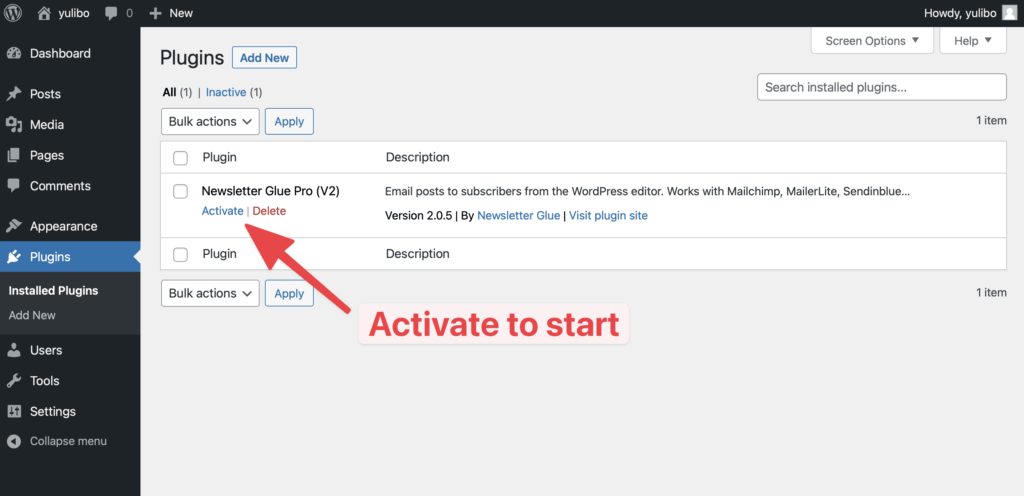Having strong email deliverability is crucial for driving opens, clicks, and conversions from your campaigns. With spam filters getting smarter, it’s more important than ever to follow email deliverability best practices.
In this article, we’ll share essential tips and strategies that can help you improve email deliverability rates and engagement metrics.
Let’s get started.
Why is email deliverability so important?
Deliverability is basically how successful your emails are in reaching recipients’ inboxes instead of getting stuck in the spam folder. High deliverability translates to higher inbox placement and increased open and click-through rates.
As a marketer, your carefully crafted email campaigns can go to waste and end up in the spam or junk folder, if the email deliverability is not good. When an email is sent, mailbox providers like Gmail check all aspects of your sending, from engagement to complaints to bounce rates.
If your subscribers consistently ignore, delete, or mark your emails as spam, you are labeled as a risky sender. This not only affects your ability to communicate with your audience but also the overall effectiveness of your marketing efforts.
That’s why it’s important to give deliverability a top priority from day one. Following the best practices and optimizing your subscriber lists are key for email marketing success in the long run.
11 email deliverability best practices to get your emails inboxed
Getting your emails reliably delivered to the inbox is crucial for any email marketer. With inbox placement rates declining across the industry, you need to be proactive to keep your sender reputation strong.
Follow these 11 email deliverability best practices to ensure your subscribers see your emails:
1. Get subscriber engagement
Getting subscribers to respond to your emails is one of the best ways to improve email deliverability. A high engagement rate signals to mailbox providers that your subscribers find your content relevant.
Enjoying this post?
Don't miss the next one.
Subscribe to get our latest product updates and blog posts.

To encourage engagement, you can ask questions in your emails to spur genuine replies from recipients. For example, you could ask your readers what topics they want to hear more about. Or you can run a giveaway contest where entrants have to respond.

When your subscribers reply to your emails and engage in back-and-forth conversations, it’s a clear sign that they’re genuinely interested in what you have to say. Mailbox providers take notice of this engagement and gain confidence that you’re an authorized sender, ultimately improving your deliverability.
2. Implement DMARC, SPF and DKIM
To make sure mailbox providers trust your emails, you must authenticate them using three important protocols – DMARC, SPF, and DKIM. These acronyms might seem intimidating, but they play a crucial role in proving your identity as a legitimate sender.
- DMARC (Domain-based Message Authentication, Reporting and Conformance) stops spoofed emails from reaching the inbox. You can start with monitor-only mode, then increase to quarantine or reject as you confirm legitimate senders pass.
- SPF (Sender Policy Framework) confirms the sending servers are authorized to send on your behalf.
- DKIM (DomainKeys Identified Mail) cryptographically validates emails sent from your domain.
With all three in place, you’re adding layers of verification that mailbox providers can rely on. They can see that you’ve taken the necessary steps to prove your authenticity, which in turn boosts your deliverability. It’s like giving them the green light to confidently deliver your emails to the inbox, knowing that they’re from the real you.
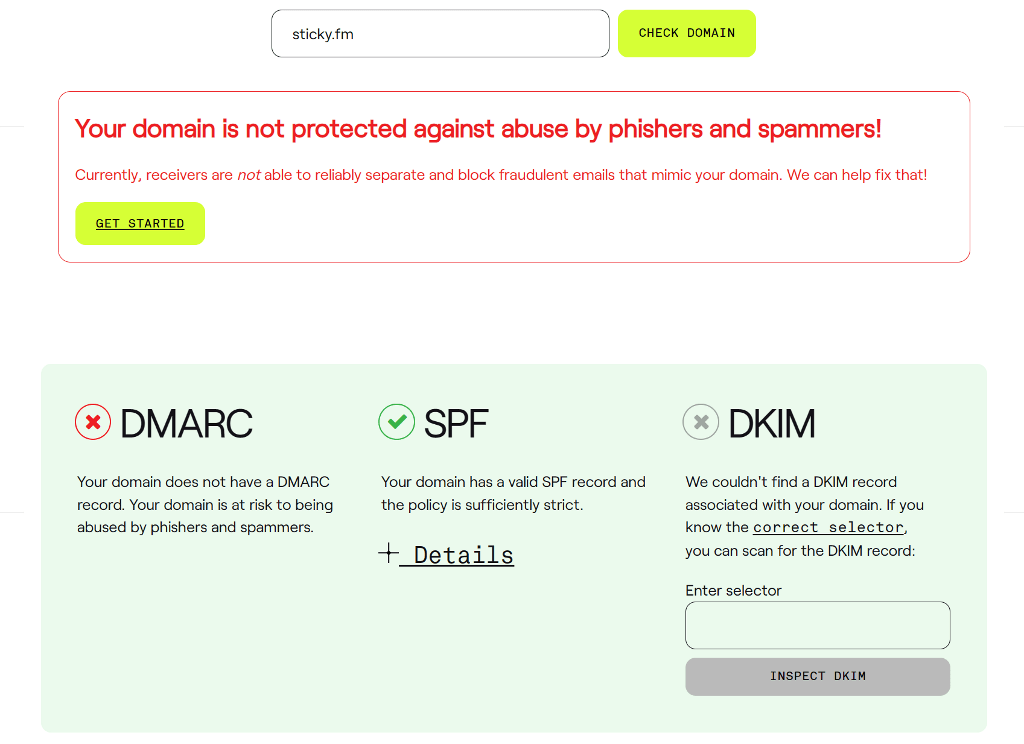
If you’re not sure how to add these DNS records, you can read this article or use a service like DMARCIAN.
3. Request subscribers to add you to their address book
If you want to make sure that all your future emails reach subscriber’s inboxes, here’s a trick: ask them to add your email address to their contact list. This might sound simple, but it can have a big impact on bypassing those spam filters.
When your email address is added to their contact list, it’s like getting a VIP pass to the primary inbox. Email clients recognize these address book entries as “safe senders,” so your emails are more likely to reach the inbox.
You can make this request as part of your signup flow. For example, you can include a friendly message like, “To ensure you never miss our newsletters, please take a moment to add our email address to your contact list.” It’s a polite way of letting your subscribers know that you want to stay connected with them.
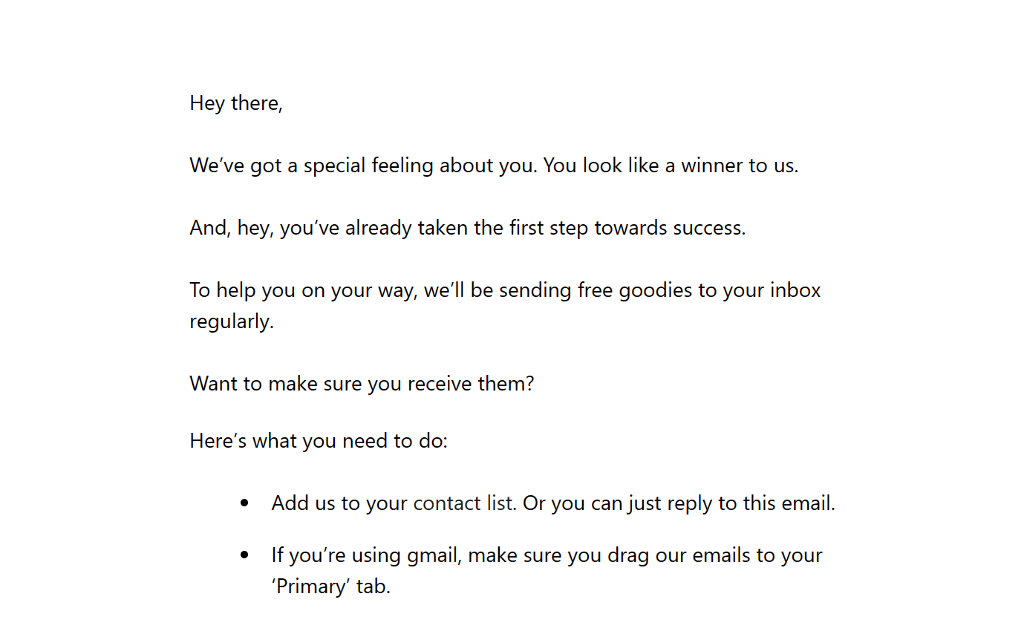
Additionally, you can provide simple instructions on how to add contacts for major email providers like Gmail, Outlook, and Yahoo.
4. Monitor bounce codes
When an email fails to reach its intended recipient, bounce codes are generated. These codes provide valuable information that can help you pinpoint and address the root cause of failure.
By default, not many ESPs provide the raw bounce codes to customers. You might need to reach out to their support team and specifically request access to this information.
The bounce codes will be descriptive and explain exactly why a message failed delivery. For example, it may state that your IP address is on a certain blocklist, or that the content violated a policy.
If your ESP does not provide the raw bounce code data, you should still be able to contact their support team and ask for their help interpreting any delivery failures. A reputable ESP will have deliverability experts on staff who can analyze the bounce codes and explain what went wrong.
5. Use clean content
When it comes to email deliverability, it’s important to pay close attention to the content you include in your emails. Certain design choices, words, and formatting can trigger spam filters.
For example, overusing ALL CAPS, exclamation points, or using urgent language like “Act Now!” or “Buy This Before It’s Gone!” is overly promotional and raises red flags.
You also need to watch out for spam trigger words like “free,” “discount,” “guarantee,” and more. While these words may accurately describe your offer, consider alternatives that sound less spammy.
Paying attention to your email design is important as well. When choosing fonts opt for clean and email safe fonts like Arial or Times New Roman. Avoid using colorful text as it is associated with spammers.
By carefully reviewing your email content and design, you can remove any components that mailbox providers may see as promotional or suspicious. Take a subtle approach and focus on creating value for your subscribers.
6. Make it easy to find unsubscribe link
Adding a clear and easily accessible one-click unsubscribe link in your emails is not only a legal obligation in many countries but is also crucial from the email deliverability perspective. Without an obvious opt-out option, subscribers may resort to reporting your emails as spam due to frustration. This in turn could hurt your deliverability.
To make it obvious, position the unsubscribe link toward the bottom of your email in an easy-to-notice location. Use a common label like “Unsubscribe” and style it in an underlined font so it stands out.
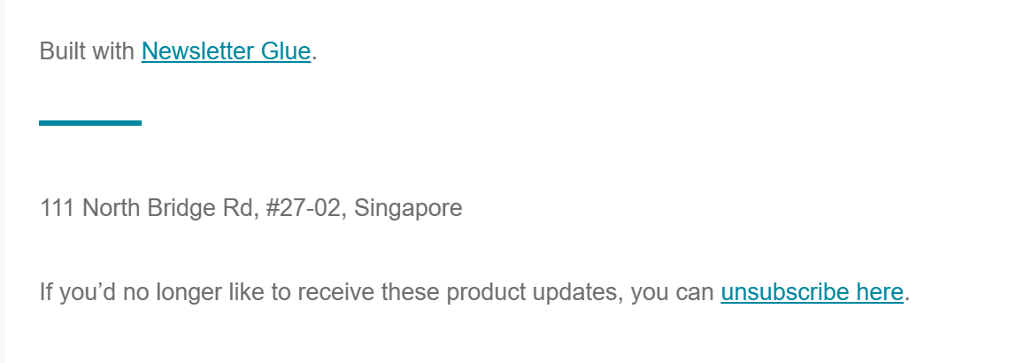
You also want the unsubscribe process to be seamless for recipients. The harder it is for them to unsubscribe, the more likely they’ll click the “Report Spam” button, damaging your reputation with mail servers.
7. Pick an ESP with deliverability experts
Not all ESPs are the same in terms of deliverability. It’s important to choose an email service provider that makes deliverability a top priority.
But how do you judge an ESP to have good deliverability? Here are a few signs to look out for:
- Go with any established ESP that has been in the business for 5+ years. They are more likely to have a specialized deliverability team. Newer ESPs often overlook this.
- Research if the ESP has employees with “deliverability” in their titles. The presence of deliverability experts indicates they’re serious about inbox placement.
- Look if the ESP is part of membership groups like MAAWG that focus on mitigating spam and abuse.
- Read through the ESP’s blog as frequent educational posts about deliverability signify in-house experts.
- Rigorous onboarding processes also show that the ESP checks customers to avoid risky senders impacting their IP reputation.
8. Use double opt-in and clean your list periodically
Using a double opt-in when subscribers sign up for your list guarantees that only actually want to receive your emails. This means that they not only provide their email address but also confirm their subscription by clicking on a verification link sent to their inbox. This extra step helps prevent spam traps from hurting your deliverability metrics.
In addition to that, it is also important to periodically clean your email list by removing inactive email addresses that have shown no recent engagement. As a general rule of thumb, consider removing those who haven’t opened your emails in the last 6 months.
However, before you decide to remove subscribers, you can run a re-engagement campaign to check if they’re still interested. You can offer them incentives like discounts or exclusive content to convince them to open your emails.
However, if the subscribers still remain unengaged, it’s better to remove them from your list. This might seem odd, but maintaining a lean, active list protects your sender reputation and improves future deliverability.
9. Add a preference center and segment your mailing list
It’s frustrating to get bombarded with emails that aren’t really relevant to your interests. Someone interested in blog posts doesn’t want your product update emails.
This is where a preference center comes in handy. It allows your readers to opt into specific topics or categories that they’re interested in. You can then use it to segment your mailing list and send relevant emails only.
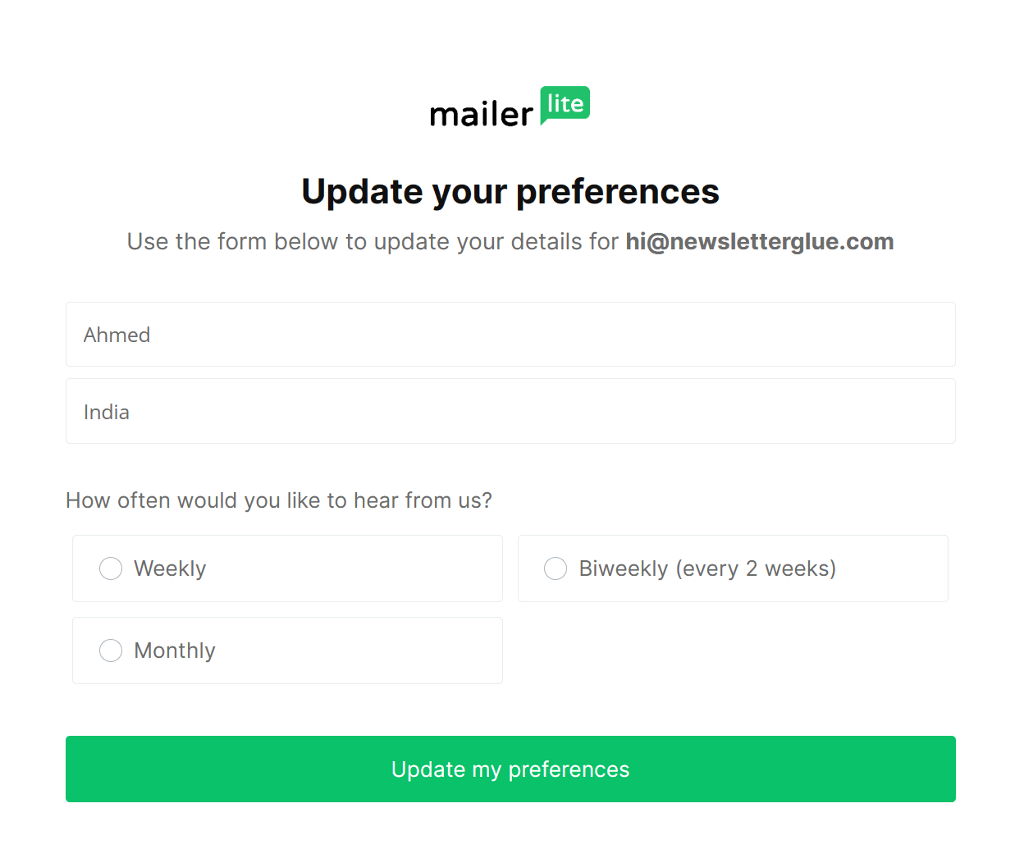
Sending targeted and valuable content based on expressed interests makes all the difference. Subscribers are more likely to open and click on your emails because they know the content will be truly valuable to them.
Higher open and click rates signal to mailbox providers that you’re sending wanted information. This strengthens your domain reputation and inbox placement.
10. Use a consistent sender name
You know when you see an email in your inbox and you’re like, “Wait, who is this from?” It can be pretty confusing and even make you skeptical about opening it, right? That’s why it’s important to keep your sender name consistent across all your email campaigns. This helps subscribers instantly recognize your emails in their flooded inbox.
Avoid constantly changing the sender name as this looks suspicious and confusing to not only your subscribers but also in the eyes of mailbox providers.
With a familiar sender name subscribers won’t mistake your messages for spam or unsubscribe simply because an odd name appears.
A recognizable sender name in the inbox builds subscriber trust over time. They start to appreciate emails from your brand as helpful material, which helps in deliverability.
11. Gradually increase the sending volume after a long break
If you haven’t sent any emails for a while, don’t suddenly blast out emails to your entire list. This looks risky and spammy to mailbox providers.
Instead, create a slow ramp-up plan. If you’re sending less than 10,000 emails and you’ve only been inactive for about a month, you probably don’t need to worry too much about warming up your list. If it’s been over a year and your subscriber count exceeds 10,000, you should start by emailing your most engaged subscribers first, then steadily increase the number of recipients.
Alyssa Dulin from ConvertKit has a handy template that involves taking the overall goal of the volume you want to send and dividing it into chunks of four. So it’s like, start with 500 and then scale it up to 1000 and then you can quickly scale up to 5,000 thousand and then like 10,000.
This gradual volume increase rebuilds your domain’s reputation with mailbox providers and gets your deliverability back on track.
That’s all. Reliable inbox placement is the result of all of these things working together. With a comprehensive strategy to improve deliverability, you can achieve email marketing success.
Email deliverability tools
Now that we’ve covered best practices to improve your email program, you also need the right tools to monitor deliverability and pinpoint any issues. With data and diagnostics, you can detect and rectify problems early on.
Consider adding these deliverability-focused tools to your tech stack:
MxToolbox
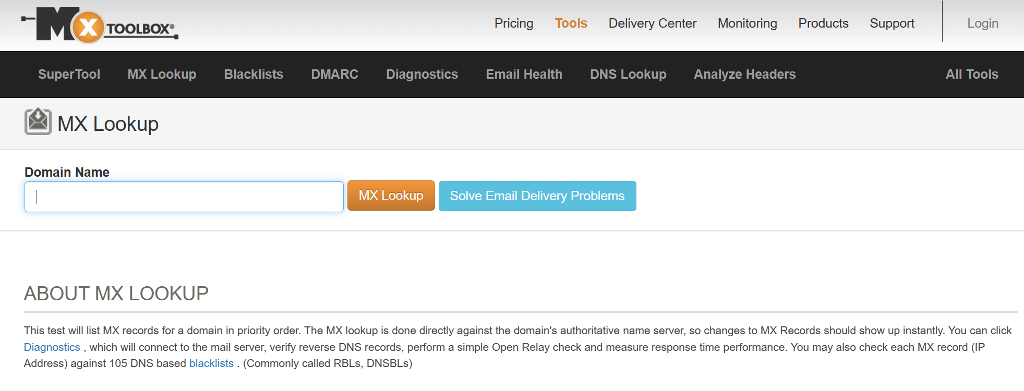
MxToolbox is a tool that offers a suite of diagnostics to evaluate and monitor your email sender reputation. You can enter your sending IP address or domain to instantly check if you are on any major email blocklists, or if you have a missing SPF, DKIM, or DMARC record.
Kickbox

Kickbox is another valuable email deliverability tool known for its real-time email verification feature.
When collecting new subscriber emails, you can pass the addresses through Kickbox’s API or integrate the validation directly into your forms. Kickbox will instantly verify the deliverability of each email and catch typos or spam traps before they reach your list. It also lets you validate and clean your existing subscriber lists.
Wrapping Up: Best email deliverability practices
Deliverability is not a set-it-and-forget-it process. It’s a continuous process wherein you optimize your email to build a reputation for your domain.
Implementing authentication protocols like DMARC and DKIM, writing engaging content, monitoring your sender reputation, and following the other best deliverability practices mentioned in this article can help you earn your place in the subscriber’s inbox.



